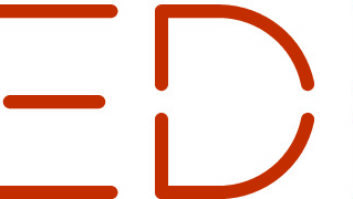Music servers continue to morph into audio/video servers here at the CEDIA Expo, where ReQuest and Sooloos are adding video-distribution capability to their music-server lines, Sunfire is launching its first A/V server, and Fuze is launching upgraded A/V servers.
In music servers, NaimNET is entering the U.S. market with a trio of audiophile models. Qsonix is upgrading the software in its music server, and Crestron is launching a custom installed component that uses an iPod to distribute music.
Here’s what installers will find at the show:
Crestron: The company is turning an iPod into a one-zone music server with the launch of the iServer, a first-of-its-kind product that uses an iPod installed in a front-panel slot as its hard drive. It’s billed as a bridge between dedicated HDD music servers and lower-cost iPod docks in custom installed multiroom-audio systems. It also uses USB-over-Ethernet to automatically synchronize the iPod with a networked PC’s iTunes library whenever a new song is added to the library. The targeted suggested retail is $995. It ships in October.
Fuze Media Systems: The new FuzeOne second-generation A/V server brings down system cost, adds compatibility with Windows Media Extenders for streaming live and time-shifted HDTV, and adds storage of DVD movies ripped on a networked PC. The new products also add optional Blu-ray drive for playback in a main home theater room, quad HD CableCard capability instead of two-card capability, and music control from any networked PC.
To rip DVDs, installers add Fuze media-management software to a PC, then install separately purchased Any DVD software available at about $50, the company said.
At $5,995, the 750GB server offers a single video zone and five audio zones but can be expanded to six video zones and nine audio zones. Its predecessor started at $14,000 and delivered only one video zone and one audio zone at that price.
The predecessor also required $2,000 Ethernet-network clients in other rooms to receive audio and video, but now, audio is distributed as a line-level signal for routing and amplification by a standard multiroom audio system’s switcher/amplifier. In another change, live and time-shifted HDTV and other video is still distributed over an Ethernet network but to less expensive Media Center Extenders costing as little as $250.
The previous version also transmitted live and time-shifted HDTV programs that were transmitted in standard definition over the Ethernet to dedicated A/V clients. Audio was transmitted in analog form over CAT-5 to the dedicated clients.
NaimNet USA: The newcomer to the U.S. market is launching three audiophile-grade music servers, all using Ethernet to distribute music throughout the house to CAT-5-connected amplifier clients. The servers stream music without loss over a standard IP network to local-room amplifier/clients, the company said. The servers are natively compatible with NetStreams’s DigiLinX IP-based multiroom-audio systems.
NaimNet Music Servers store music “that is fully bit-perfect,” and music is copied onto the hard drive without any compression, said Mitch Witten, NaimNet USA sales and marketing director.
The $6,800-suggested NaimNet NS01 features one audiophile analog output but can deliver up to six separate simultaneous uncompressed music streams. The $7,900 NS02 has one audiophile analog output, three additional analog outputs and ability to deliver up to six separate simultaneous uncompressed music streams. The $9,575 NS03 adds a widescreen touchscreen to the front panel to control the system.
Three Ethernet-connected amplifier/clients network via IP with one another and with the servers. One of the amps, the half-rack-size NNP02-DC, is a 28-volt DC amp that gets power via CAT-5. “All of the amps are most likely to be used with freestanding or bookshelf speakers in the local room or zone,” Witten noted.
All servers feature two 400GB drives with automatic backup capability that regularly copy the contents of one to the other. Additional network-attached storage (NAS) device can be added to expand capacity, and all play WAV, FLAC, AAC, MP3 and WMA from any connected storage device whether USB- or network attached.
Qsonix: Upgrades to the software on its four-zone Q110 music-management system incorporate more search features, and playback of FLAC lossless and uncompressed WAV files mark the company’s CEDIA lineup.
ReQuest: The new DVD-playing/ripping Intelligent Media Client (IMC) adds networked movie storage to the company’s music servers, and it acts as a gateway to display online media, including YouTube videos. In the “near future,” the company plans to add music and video streaming and downloading direct from the Internet.
It ships in October at a suggested $2,495.
The 1080p-up-scaling DVD player delivers local playback of DVDs, but it also rips DVDs for storage on Ethernet-networked iQ or F series media servers. When a DVD is inserted into the slot-loaded DVD drive on the IMC, the user is asked if the system should play the DVD or archive the DVD to the server. If the user selects archive, then the DVD is archived to the F-series or IQ server and added to the HD movie library on the server. The device features component and HDMI video outputs.
The player is said to be fully CSS-authorized and compliant. ReQuest also said it implemented “a physical verification component to ensure physical media ownership,” a spokesman said.
The video functionally will be added to the servers via a firmware upgrade. Recently purchased F and IQ servers will have an upgrade path for the new firmware by the end of the year.
In the past, ReQuest’s video presence was limited to a VideoReQuest controller that connected to the audio servers and managed the content of a connected Sony 400-disc DVD changer within the home theater room.
Sooloos: The New York City company has offered CD-ripping music servers to stream music to networked clients and to traditional multiroom-audio systems. Now it is launching servers that store audio plus standard- and high-definition video that’s imported from a networked PC. The products also deliver online access to Rhapsody’s music service, YouTube videos and Flickr photo-sharing site.
Stored media can be selected for playback from a Control:One 17-inch wired touchpanel, from third-party control panels and from an Wi-Fi-equipped iPhone and iPod Touch.
The company plans fall shipment of multiple storage components. One is the Sooloos Core Twinstore, which stores music and photos, and the Core Quadstore, which holds music, photos and video. Both incorporate drive bays for inserting any brand of HDD. Both devices offer automatic backup and daisy-chaining to store any size media collection, the company said. Server capacity can be expanded without limit in 4TB chunks, 3TB for storage and 1TB for backup.
For output, Sooloos will offer Sooloos Solo, a single-zone audio output device with an audiophile-quality DAC; Sooloos Quartet, a four-zone audio output device; and Sooloos Cinema, a single-zone HD video output device.
Pricing and details were unavailable.
Velocity Micro: The high-performance PC maker teamed up with Fuze Media Systems to offer a multiroom-A/V system called the Velocity Micro Fuze Box, due in the fourth quarter at $1,995 on Velocity’s Web site and in retail outlets.
The starting price system includes 750GB of storage, one home theater zone and five audio zones. It offers the same features as Fuze’s FuzeOne but is expandable only to two additional video zones, features slower response time, lacks Blu-ray option and lacks RAID array.













